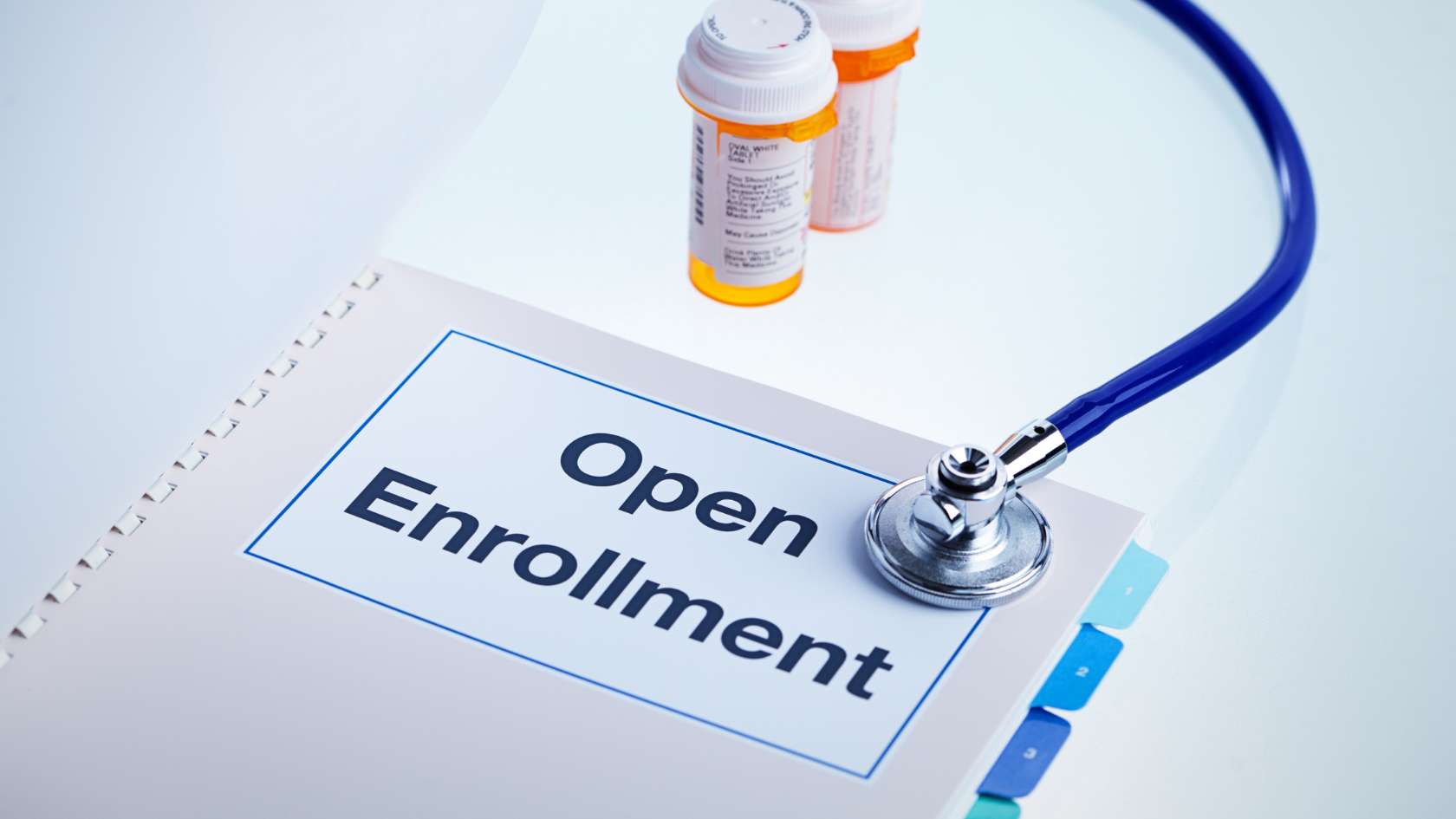
Open Enrollment Insurance Options: What You Need to Know

As we step into the open enrollment period, now is the perfect time to consider your insurance needs for the upcoming year. Open enrollment serves as a unique opportunity to evaluate your current insurance policies and decide if they align with your healthcare and financial needs. Whether it’s adjusting your health coverage, adding life insurance, or exploring disability insurance, this window can help you make decisions that offer long-term security. And with InsureHopper’s easy-to-use tools, finding the right coverage at the best rate has never been easier.
What is Open Enrollment?
Open enrollment is a designated period, typically occurring each fall, when individuals can sign up for or make changes to their insurance plans for the coming year. This period is critical because, outside of open enrollment, it can be challenging to adjust your insurance policies unless you experience a significant life event such as marriage, the birth of a child, or a change in employment.
During open enrollment, you have the flexibility to adjust the following types of insurance:
Health Insurance: Review your health coverage, compare options, and decide if your current plan still meets your needs.
Life Insurance: Evaluate if your existing life insurance aligns with your financial obligations and family needs.
Disability Insurance: Consider the importance of disability insurance for income protection in the event of an unexpected illness or injury.
Taking time during open enrollment to review and potentially update these policies ensures that you are adequately covered and can even help reduce costs for the upcoming year.
Key Insurance Policies to Reassess During Open Enrollment
Health Insurance: Choosing the Right Plan Based on Medical Needs
Health insurance remains one of the most essential policies for protecting yourself and your family from high medical costs. During open enrollment, it’s wise to review any changes to your plan’s deductibles, premiums, and out-of-pocket maximums. When comparing plans, consider:
Expected healthcare needs: Think about any anticipated medical expenses, such as planned surgeries or regular medications.
Coverage and network: Confirm that your preferred healthcare providers are in-network to avoid unexpected costs.
Preventative care benefits: Look for plans that offer wellness check-ups, mental health support, and other preventative services.
For a seamless experience, InsureHopper can assist you in comparing different health insurance plans side by side, allowing you to assess coverage limits, deductibles, and premiums in one place.
Life Insurance: Adjusting Your Policy as Your Financial Situation Changes
Life insurance needs can change based on major life events like getting married, buying a home, or having children. During open enrollment, it’s beneficial to reassess your coverage to ensure it reflects your current lifestyle and financial goals. Here are some key considerations:
Coverage amount: Determine if your existing policy covers debts, income replacement, and family support in your absence.
Policy type: Decide if you want to switch from a term policy to a whole or universal policy that accumulates cash value.
Beneficiaries: Check that your beneficiaries are up to date, especially if your family dynamics have changed.
With InsureHopper, you can explore various life insurance options from multiple carriers, helping you find the policy that best suits your needs.
Disability Insurance: Why It’s Critical for Income Protection
Disability insurance provides a safety net if an illness or injury prevents you from working. This insurance type is often overlooked but can be crucial for anyone reliant on a steady paycheck. Key points to consider during open enrollment include:
Short-term vs. long-term disability: Decide if you need a short-term policy (covering a few months) or long-term (covering several years or until retirement age).
Income replacement rate: Ensure that the policy covers a sufficient percentage of your income.
Waiting period: Check the time you’d need to wait before benefits begin after a disability event.
Open enrollment is an ideal time to add or modify disability coverage, and InsureHopper’s platform can provide quotes for different disability policies from reputable insurers.
How to Compare Insurance Policies During Open Enrollment
Finding the right insurance plan can be overwhelming, but comparing key elements can help narrow down your options.
Key Comparison Factors
Premiums and deductibles: Look at how much you’ll pay each month (premiums) and the amount required before insurance kicks in (deductibles).
Coverage limits: Review the maximum coverage limits to make sure you’re adequately protected.
Exclusions and limitations: Read the fine print to understand what isn’t covered and avoid surprises.
Simplifying the Process with InsureHopper
InsureHopper’s comparison engine takes the hassle out of open enrollment by providing a quick, easy-to-navigate platform where you can see premiums, deductibles, and coverage options from multiple providers. With a streamlined form-filling process, you can easily assess the differences between policies without spending hours researching each one individually.
Top Health and Life Insurance Providers for Open Enrollment
When choosing an insurance provider, it’s important to consider factors like service area, coverage options, and customer satisfaction. Here are a few highly-rated providers to consider during open enrollment:
Provider A: Known for extensive health plan options, with strong preventive care benefits.
Provider B: Offers competitive life insurance policies with flexible terms and high customer ratings.
Provider C: Provides both short-term and long-term disability insurance with quick approval processes.
With InsureHopper’s insights and ratings, you can see which providers offer the best options in your area and get a better sense of the pros and cons for each insurer.
How to Prepare for Open Enrollment: Documents and Information to Gather
Open enrollment only happens once a year, making it a critical time to review your insurance needs and make any necessary changes. Preparation can ensure you make well-informed choices that align with your healthcare needs, financial goals, and lifestyle changes. Having the right documents and information at hand simplifies the process and allows you to focus on finding the best plans for the upcoming year. Here’s what you’ll need:
1. Personal Identification and Household Information
To get started, gather basic personal information for everyone who needs coverage under your plan, including:
Full names and birthdates for all family members
Social Security numbers (necessary for enrollment in most health plans)
Tax filing status and expected household income for the upcoming year
For households with multiple dependents, it's helpful to have each person's information ready, as certain health and supplemental insurance plans require detailed family information.
2. Employment and Income Documentation
Income affects eligibility for certain subsidies and tax credits, particularly with Affordable Care Act (ACA) plans. Ensure you have the following documents:
Recent pay stubs for yourself and any spouse or family members contributing to the household income
Tax return from the previous year to help estimate income for the coming year
Other income sources like freelance or gig work earnings, rental income, or investment dividends
For individuals exploring ACA plans, income documentation helps determine eligibility for cost-sharing reductions or premium tax credits, which could lower your monthly premium costs.
3. Current Insurance Policy Details
Gather information on your current insurance plans (if applicable) to help you compare existing coverage with new options available during open enrollment. Key documents include:
Policy ID numbers for each current insurance policy
Summary of benefits and coverage (SBC) document, detailing your plan's deductibles, premiums, out-of-pocket maximums, and copayments
Policy renewal terms and premium notices, which may indicate any rate increases for the upcoming year
Having this information makes it easier to compare aspects like deductibles, copays, and coverage limits and see if switching to a new plan might save money or improve coverage.
4. Record of Recent Healthcare Expenses
Review your family’s recent medical expenses to understand your healthcare needs better. This record should include:
Medical bills and receipts for doctor visits, treatments, and prescriptions over the past year
Explanation of Benefits (EOB) documents from your insurance company to see how much you paid out-of-pocket and what was covered by insurance
Prescription costs and frequency, particularly if you or a family member regularly takes medication
Understanding your recent healthcare expenses will help you predict next year’s needs and choose a plan with appropriate coverage, deductibles, and copays.
5. Anticipated Healthcare Needs for the Coming Year
If you expect any major health changes or events in the coming year, they should factor into your plan selection. Consider the following:
Planned medical procedures or surgeries
Expected family additions, like a pregnancy or adoption, that will add a new dependent
Health condition management, such as therapy, mental health services, or chronic illness management
Listing anticipated needs will guide you in selecting a plan with sufficient coverage and out-of-pocket limits to minimize costs.
6. Eligibility Documentation for Government Programs
If you’re considering applying for Medicaid, CHIP, or ACA plans, ensure you have documentation confirming your eligibility. Key documents include:
Proof of U.S. residency, such as a driver’s license or utility bill
Proof of immigration status if applicable, for non-citizens
Proof of disability or other qualifying factors for Medicaid eligibility (if relevant)
Eligibility documentation for government programs often requires verification, so have these ready to speed up the enrollment process.
7. List of Preferred Doctors and Medications
If continuity with your current providers or prescriptions is essential, keep a list of your preferred doctors, specialists, and medications on hand. When comparing health insurance options, check if your providers are within a plan’s network and if your medications are covered.
Names and locations of primary care doctors and specialists
Preferred pharmacies and prescription costs
Prescription list, including drug names and dosage information
Having these details will allow you to verify in-network availability and choose a plan that accommodates your specific provider and medication needs.
Common Mistakes to Avoid During Open Enrollment
Failing to Update Your Beneficiaries
Life changes, and so do the people you may want to name as beneficiaries. Make sure your policies reflect your current wishes by updating beneficiary information during open enrollment.
Overlooking Supplemental Policies Like Dental, Vision, or Disability Insurance
Health insurance is essential, but don’t forget about supplemental policies. Dental, vision, and disability insurance can help cover critical services and protect against financial strain.
Ignoring the Fine Print
Always take time to read the fine print before finalizing any policy. Understanding the exclusions, coverage limits, and renewal terms of your insurance ensures you’re fully informed about what you’re signing up for.
How InsureHopper Can Help You Find the Best Insurance for Open Enrollment
InsureHopper is designed to make open enrollment less stressful by connecting you with multiple carriers. Its advanced comparison engine allows you to view accurate, bindable quotes tailored to your needs. Not only does this save time, but InsureHopper also helps you find competitive rates without the usual hassle of back-and-forth calls or multiple inquiries.
Moreover, InsureHopper’s rating and review system lets you see real feedback from other customers, offering transparency and confidence in your decisions.
Open enrollment is your once-a-year opportunity to make thoughtful adjustments to your insurance policies and ensure you’re fully covered. By taking advantage of this period, you can secure the right coverage and potentially save money. For anyone seeking an efficient, reliable way to compare plans, InsureHopper offers an exceptional experience that streamlines policy selection and helps you make informed decisions.
Take action now—visit InsureHopper to explore insurance options, compare quotes, and secure the best coverage for your needs!
Frequently Asked Questions (FAQs)
What is open enrollment, and when does it start?
Open enrollment is a period, typically occurring in the fall, when you can enroll in or adjust your insurance plans for the upcoming year.
Can I change my health insurance plan outside of open enrollment?
Generally, changes outside of open enrollment are only allowed if you experience a qualifying life event, such as marriage, the birth of a child, or loss of previous coverage.
What are the best insurance options during open enrollment?
The best options depend on individual needs and may include health, life, and disability insurance.
